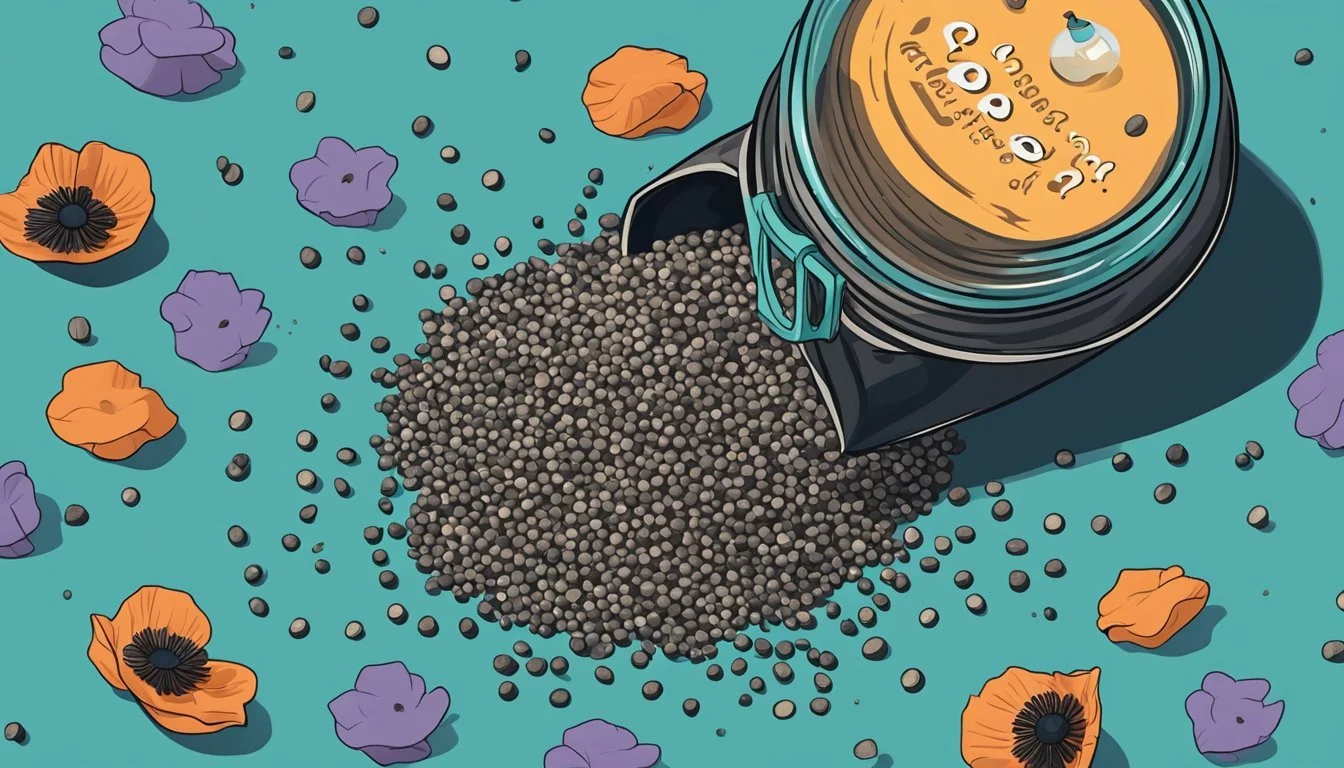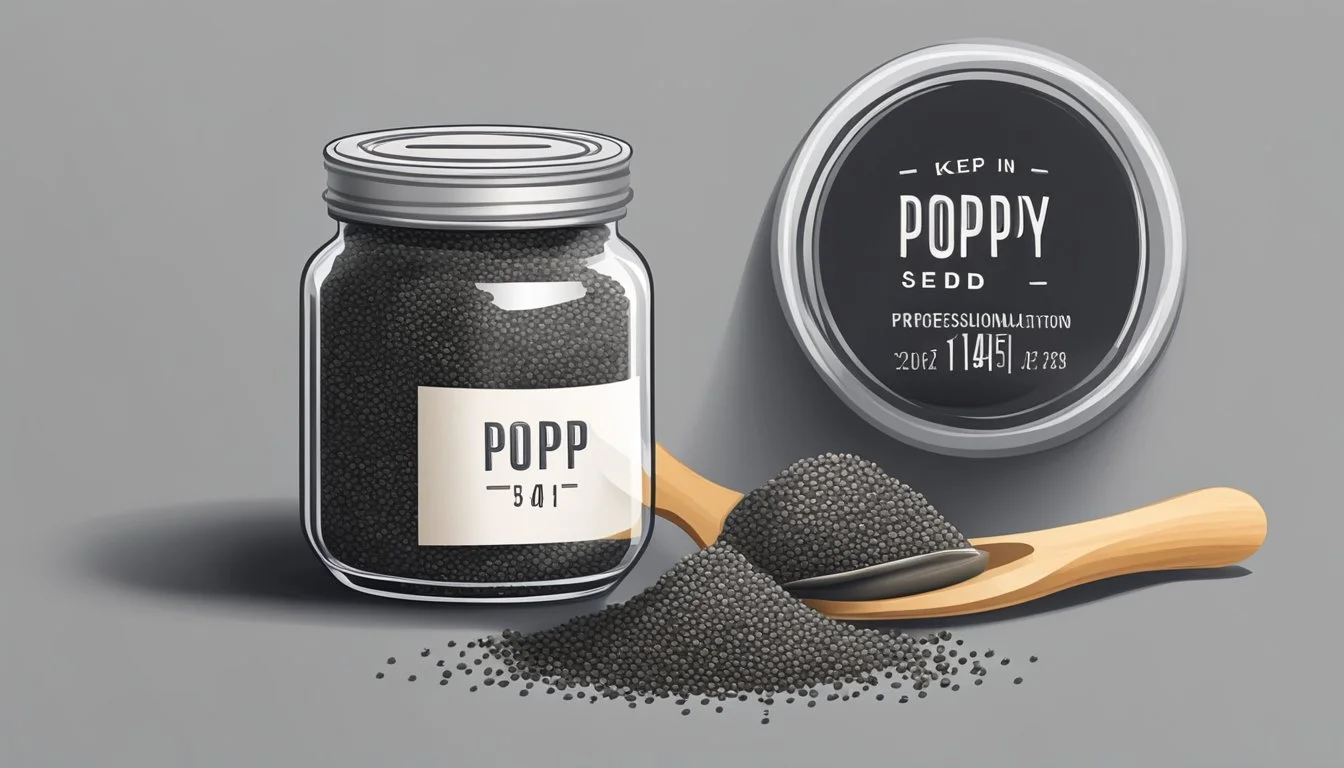Do Poppy Seeds Go Bad?
Understanding Shelf Life and Storage
Poppy seeds are a versatile ingredient used in various culinary dishes, but many wonder if they can go bad over time. Yes, poppy seeds do go bad, and it shows through signs like dull color, rancid smell, or moldy appearance. Although they have a long shelf life, if not stored properly, they can lose their potency and flavor.
Quality can degrade due to exposure to heat, moisture, and air, which affects the rich nutty flavor that food lovers appreciate. Storing them in an airtight container away from light and moisture is crucial for maintaining their quality. By keeping these storage tips in mind, one can ensure that the poppy seeds remain fresh and flavorful for as long as possible.
Recognizing the signs of spoilage is essential for anyone who wants to enjoy the true essence of poppy seeds in their recipes. The shelf life can vary, but well-stored poppy seeds can last up to a year. For safety and taste, always check for any off odors or unusual colors before using them in your next dish.
Understanding Poppy Seeds
Poppy seeds come from the opium poppy plant and are a versatile ingredient known for their nutty flavor and various uses in cooking and baking. They offer several nutritional benefits, although it's important to store them properly to maintain their quality.
Origins and Nutritional Profile
Poppy seeds are harvested from the opium poppy (Papaver somniferum). Despite their association with the opium poppy, the seeds themselves contain negligible amounts of opiates and are safe for consumption.
These edible seeds are rich in several nutrients. They are particularly high in fiber, fatty acids, and minerals like magnesium. Poppy seeds also contain poppy seed oils, which are high in unsaturated fats, contributing to their health benefits. This nutritional profile makes them a valuable addition to a balanced diet.
Culinary Uses of Poppy Seeds
In cooking, poppy seeds are widely used in a variety of dishes due to their distinctive flavor and crunchy texture. They are a common ingredient in baked goods such as pastries and breads. Recipes often highlight their versatility; they can be used in both sweet and savory dishes.
Beyond baking, poppy seeds enhance salad dressings, adding a nutty taste and texture. They also appear in traditional dishes across various cultures, including Indian, Middle Eastern, and European cuisines. This widespread culinary use underscores their importance as a staple in various kitchens.
Shelf Life and Freshness
Poppy seeds can remain fresh for several years if stored properly. The key factors affecting their shelf life include storage conditions and noticeable signs of spoilage.
Factors Affecting Poppy Seed Freshness
Storage Conditions: Poppy seeds last longer in cool, dark places. Heat and light can cause them to spoil faster. Storing them in an airtight container helps to maintain their freshness by protecting them from moisture and air exposure.
Temperature: For extended shelf life, refrigeration is beneficial. Stored at room temperature, poppy seeds can last 3-4 years, but refrigeration can further prolong their usability.
Oil Content: The natural oils in poppy seeds can become rancid over time. Proper storage slows this process, preserving the seeds' quality and potency.
Identifying Spoilage
Discoloration: Spoiled poppy seeds may appear dull or have noticeable discoloration. Fresh seeds should retain a vibrant color.
Smell: A fresh batch has a neutral or slightly nutty aroma. If they emit a musty or rancid smell, they are likely spoiled.
Appearance: Check for a shriveled or shrunken appearance. Fresh poppy seeds should be full and plump.
Taste: A stale or rancid taste is a clear indication of spoiled seeds. It's advisable to discard such seeds to maintain food safety.
By understanding these factors and regularly checking for spoilage signs, one can maximize the shelf life and freshness of poppy seeds.
Optimal Storage Conditions
Proper storage of poppy seeds ensures their longevity and preserves their flavor. Focus on controlling light, temperature, and moisture to keep seeds fresh.
Light and Temperature
Exposure to light and high temperatures can significantly reduce the shelf life of poppy seeds. Direct sunlight should be avoided as it can cause the seeds to go rancid. The ideal storage temperature is around 50-60°F (10-15°C). Storing seeds in a cool, dark place like a pantry or a spice rack away from heat sources maintains their quality.
Ensuring the seeds are in a dry place is also critical. High humidity can lead to mold growth, which compromises both the safety and taste of the seeds.
Proper Containers and Locations
Using the right containers is essential for maintaining poppy seed freshness. An airtight container is recommended to prevent oxidation and moisture infiltration. Glass jars or plastic containers with tight seals work well.
Store the container in a cool, dry location—avoid places like above the stove where heat and moisture can fluctuate. For extended storage, consider keeping the seeds in the refrigerator. This approach can help prolong their shelf life further, ensuring the seeds remain fresh for up to several years.
Preservation Techniques
To maintain the freshness and quality of poppy seeds, proper storage methods such as refrigeration and freezing are essential. These methods help to extend the shelf life by protecting the seeds from heat, moisture, and light.
Refrigeration
Storing poppy seeds in the refrigerator can significantly prolong their shelf life. Place the seeds in an airtight container to prevent exposure to moisture and odors from other foods. Refrigerated poppy seeds can last up to a year, maintaining their flavor and aroma. It is crucial to ensure that the seeds remain dry before placing them in the fridge.
Freezing
Freezing is another effective way to preserve poppy seeds. Place the seeds in a freezer-safe, airtight container or bag to protect against ice crystals and freezer burn. Label the container with the purchase date. Frozen poppy seeds can stay fresh for up to two years. Ensure they are completely dry before freezing to prevent ice formation.
Usage After Storage
Properly assessing the quality of stored poppy seeds can ensure they are suitable for consumption or other uses. Evaluating aspects like smell, taste, and appearance is essential before incorporating them into cooking or planting.
Testing Seed Quality
Smell: Fresh poppy seeds have a neutral aroma, sometimes with a slight nutty undertone. If they emit a musty or rancid odor, this indicates spoilage.
Taste: Fresh seeds possess a subtle nutty flavor. A bitter or stale taste suggests they have deteriorated.
Appearance: Good-quality seeds are plump and consistent in color. Shrunken, discolored, or moldy seeds should be discarded.
Texture: Properly stored seeds remain firm. Soft or excessively hard seeds point to compromised quality.
To check if poppy seeds are viable for planting, a germination test can be performed. Place some seeds on a moist paper towel, keep it in a warm area, and check for sprouting within a week. A low germination rate indicates reduced viability.
Utilizing Seeds of Varying Freshness
Cooking: Use high-quality seeds for dishes where flavor and texture are prominent. While slightly aged seeds may be acceptable in recipes like baked goods, severely degraded seeds will impart undesirable bitterness and should be avoided.
Flavor Enhancement: Poppy seeds enhance the nutty flavor in dishes like pastries, bread, and salads. Fresh seeds yield the best taste.
Planting: For agricultural purposes, only use seeds that pass the germination test to ensure healthy plant growth. Seeds in poor condition may hinder the germination rate and produce weak plants.
Regularly inspecting and properly storing poppy seeds helps maintain their usability, whether in the kitchen or the garden.
Identifying Bad Poppy Seeds
Odor: Poppy seeds should have a nutty scent. If they smell rancid or sour, this indicates spoilage due to high fat content.
Color: Fresh poppy seeds have a consistent, dark color. Bad poppy seeds may appear discolored or dull.
Texture: Rubbing or crushing a few seeds in your hand helps identify bad seeds. They should feel firm and dry. Soft or shriveled seeds suggest they have gone bad.
Appearance: Visible mold growth is a clear sign of spoilage. Poppy seeds may develop mold if stored improperly, often appearing as white or greenish spots.
Taste: Taste a few poppy seeds if unsure. Bad poppy seeds will taste bitter and unpleasant. Fresh ones have a mild, nutty flavor.
Storage Indicators: If poppy seeds have been stored for more than a year, especially outside refrigeration, they are likely to have deteriorated in quality.
Here’s a quick checklist to identify bad poppy seeds:
Smell: Nutty vs. Rancid/Sour
Color: Consistent dark vs. Dull/Discolored
Texture: Firm/Dry vs. Soft/Shriveled
Appearance: No mold vs. Visible mold
Taste: Mild/Nutty vs. Bitter
Proper storage is crucial. Poppy seeds last longer in airtight containers, away from heat and light. Keeping them in the refrigerator can extend their shelf life to about a year.






